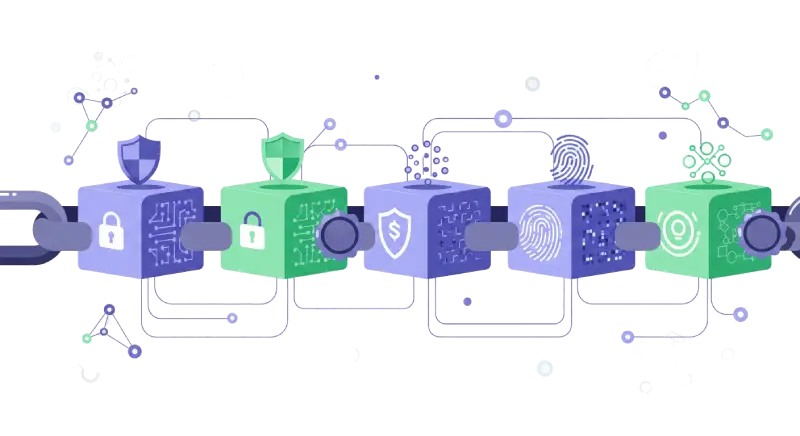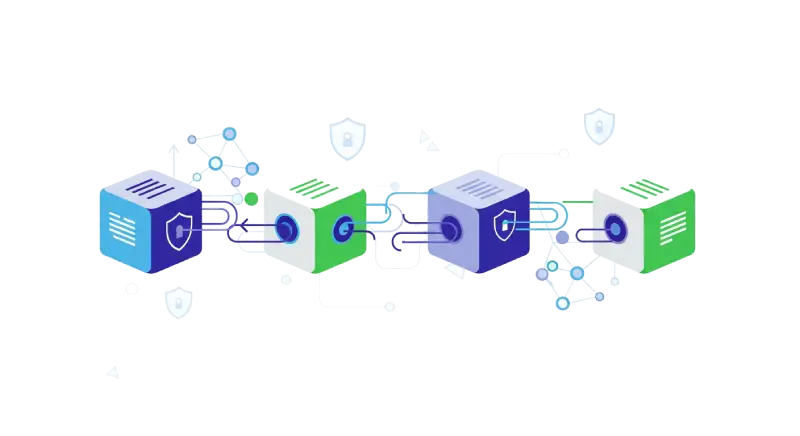
New to crypto? Learning how to secure crypto for beginners is crucial to protecting your digital assets.
This essential checklist offers practical tips, from core wallet security and ways to protect crypto keys to learning how to avoid crypto scams. Unlike traditional money, crypto is your responsibility to safeguard. Crypto transactions are irreversible and largely unregulated, meaning no bank or authority can reverse mistakes or recover lost funds—it’s all on you.
These steps reduce risks, but no security is absolute – stay vigilant to minimize potential losses. Use a combination of these steps for added security, as no single measure is enough.
Let’s get started with clear, actionable tips! 🚀
📌 Key Takeaways
- ✅ Choose a secure wallet: Pick a reliable wallet to store your crypto safely.
- ✅ Protect your keys: Keep private keys and seed phrases secure and offline.
- ✅ Secure your accounts: Use strong passwords and 2FA to safeguard your accounts.
- ✅ Avoid crypto scams: Stay vigilant against phishing and fraudulent schemes.
- ✅ Update software: Keep your wallet apps and devices up to date.
- ✅ Use trusted exchanges: Trade on reputable platforms and minimize stored funds.
- ✅ Stay informed: Learn continuously to counter new threats.
- ✅ Accept that no security is absolute: Combine these steps to minimize risks, but always stay cautious.
1. Secure Crypto for Beginners with the Right Wallet
Your crypto wallet holds your digital assets. Pick the right one to stay safe.
Core Wallet Security
- ✅ Always use cold wallets (offline hardware wallets) unless trading on an exchange: Store funds on hardware wallets for enhanced security when used correctly.
- ✅ Use hot wallets (software wallets on devices or exchanges) only for small amounts and active trading: Select software wallets on your devices or exchange-hosted wallets for daily transactions. These are convenient but more vulnerable to hacks, especially exchange wallets, which depend on the platform’s security measures.
- ✅ Choose reputable wallets from trusted providers: Buy hardware wallets from manufacturers or official stores and download audited, well-known software wallets from verified sources to avoid tampered devices or malware. Check reviews and official websites to confirm authenticity.
- ✅ Verify app legitimacy: Even apps from official stores can be fakes—check developer details, reviews, and match them to the official website.
- ✅ Check hardware wallets for tampering: Inspect the packaging and device for signs of tampering before setup to ensure it’s genuine.
- ✅ Add a passphrase (extra password) for added security: Include a custom passphrase to your hardware wallet’s seed phrase (recovery phrase) for enhanced protection. Store it separately from your seed phrase.
- ✅ Avoid public Wi-Fi for crypto transactions: Don’t use unsecured public Wi-Fi for wallet access or transactions to prevent data interception.
Optional Steps for More Security
- ✅ Use a backup hardware wallet: Set up a second hardware wallet with the same seed phrase to protect against device failure. Electronics can break, so a backup ensures access to your funds.
- ✅ Use air-gapped setups (fully offline systems): Keep wallets offline, fully isolated from the internet. Read our air-gapped wallet article for setup details.
- ✅ Set up multisig (multi-signature wallets): Use wallets requiring multiple approvals for transactions, reducing theft risk. Learn more in our multisig wallet guide.
- ✅ Prefer open source wallets: Choose wallets where the code is publicly available for community review, offering better transparency and security.
2. Ways to Protect Crypto Keys and Seed Phrases
Your seed phrase (a 12- or 24-word recovery phrase) is your crypto’s ultimate master key—lose it, and your funds are gone forever; let someone else see it, and they can steal everything.
- ✅ Store seed phrases offline: Keep them in a hidden spot only you know to avoid digital theft. This prevents hackers from accessing your keys online.
- ✅ Use fire- and water-resistant materials for seed storage: Choose durable materials like metal plates to protect your seed phrase from physical damage. Store them in a safe to ensure longevity.
- ✅ Avoid digital storage: Never save your seed phrase in screenshots, cloud storage, or emails—hackers target these. Digital copies are easy to steal.
- ✅ Keep seed phrase secret: Never share your 12 or 24-word phrase with anyone, including online “support.”
- ✅ Generate your own seed phrase: Always create it during wallet setup; never use pre-generated ones to ensure security.
- ✅ Set up your wallet personally: Configure it yourself to prevent others from accessing your seed phrase. Avoid involving anyone, even trusted people, unless absolutely necessary and they don’t see your keys.
- ✅ Create and secure multiple backups: Store copies of your seed phrase in separate, secure locations (e.g., a safe and a trusted family member’s house) using tamper-proof containers. Never share them with anyone.
- ✅ Document backup locations privately: Keep a private, offline record (e.g., on paper) of where your seed phrase backups are stored to ensure you can find them if needed, without relying on digital notes.
- ✅ Test wallet recovery: Transfer a small amount of BTC (e.g., $1–$5 in BTC) to your hardware wallet, wipe it, and restore it using your seed phrase to confirm it works. This ensures recovery reliability.
3. Secure Your Accounts
Strong passwords and 2FA add critical layers of security to your accounts.
- ✅ Use strong passwords: Create passwords with at least 16 characters, including letters, numbers, and symbols. Check password strength using tools like Bitwarden Password Strength Tester.
- ✅ Ensure passwords are unique: Use a different password for each crypto account to prevent a single breach from compromising multiple accounts.
- ✅ Enable 2FA on all accounts: Use apps like Google Authenticator or Authy for wallets and exchanges to prevent unauthorized access.
- ✅ Avoid SMS-based 2FA: SMS can be intercepted, so prefer app-based or hardware-based 2FA for better protection.
Optional Steps for More Security
- ✅ Use hardware-based 2FA: Employ devices like YubiKey for 2FA on compatible platforms to enhance account security beyond app-based solutions.
- ✅ Secure your email with a strong password: Use a password with at least 16 characters for your email, which is often linked to crypto accounts for recovery or notifications.
- ✅ Enable 2FA on your email: Use an authenticator app or hardware key to protect your email from unauthorized access.
Additional Mobile Device Security Tips
- ✅ Disable auto-login: Ensure your crypto apps require a password or biometrics every time you open them for extra protection.
- ✅ Use a strong phone lock: Set a complex PIN or password with biometrics—even if biometrics fail, this adds a barrier.
- ✅ Consider a dedicated crypto phone: For high caution, use a separate, inexpensive phone just for crypto activities, kept in a secure location.
- ✅ Enable encryption and remote wipe: Turn on device encryption (often default) and set up remote wipe via services like Google Find My Device or iCloud to protect data if stolen.
4. Avoid Crypto Scams and Phishing
Scammers target crypto newbies. Stay sharp to protect your funds.
- ✅ Check URLs before logging in: Fake websites mimic real ones to steal credentials. Always verify the website address and bookmark official sites. Use tools like Google Safe Browsing to check for phishing.
- ✅ Verify website age: Use Whois lookup tools to check a site’s registration date. New sites are often scams mimicking established platforms.
- ✅ Avoid suspicious links: Don’t click links in unsolicited emails or Telegram messages promising free crypto. They often lead to scams or malware.
- ✅ Spot common scams: Watch for fake token giveaways, impersonators posing as support, or emails asking for your seed phrase. These are designed to trick you.
- ✅ Watch for fake KYC/AML: Scammers misuse Know Your Customer (KYC) or Anti-Money Laundering (AML) processes to demand deposits—legitimate ones never require upfront funds.
- ✅ Beware of fake experts: There are no “professors” or “experts” in crypto offering personal guidance—they’re often scammers impersonating helpful figures to gain trust.
- ✅ Don’t trust small withdrawals: Scammers often allow minor withdrawals to build trust—this doesn’t prove legitimacy.
- ✅ Never brag about your crypto: Avoid sharing your wealth online or in public to prevent attracting scammers. Keep your holdings private.
- ✅ Reject investment schemes: Don’t fall for promises of quick profits through day trading or “guaranteed” plans—they’re often scams. Research before investing.
- ✅ Avoid pre-sales: Many token pre-sales or ICOs are scams—research thoroughly or steer clear.
- ✅ Be skeptical of motives: Remember, nobody wants to make you rich—they just want to make themselves rich. Question any unsolicited advice or offers that seem overly generous.
- ✅ Verify recipient addresses before sending: Always double-check the crypto address to avoid errors or malware-altered addresses. Copy addresses directly and avoid manual typing to reduce mistakes.
Common Crypto Scams to Avoid
| Scam Type | How It Works | How to Spot It |
|---|---|---|
| Fake Giveaways | Promises free crypto if you send funds first | Too-good-to-be-true offers, urgent demands |
| Phishing Sites | Fake exchange or wallet login pages | Slightly altered URLs (e.g., “b1nance.com”) |
| Impersonators | Posing as customer support | Unsolicited messages asking for sensitive info |
| Investment Scams | Promises high returns via trading or schemes | Unrealistic profit guarantees, pressure to act fast |
| Ponzi Schemes | Promises consistent high returns by paying early investors with new investors’ funds | Guaranteed profits, pressure to recruit others, or platforms encouraging reinvestment are red flags |
| AI Bots or Signals | Promises automated profits via AI trading bots or signal groups | No legitimate AI bots guarantee returns; they’re often scams leading to fake platforms |
| Cloud Mining | Offers mining crypto without hardware, often requiring upfront payments | Legitimate mining requires your own setup; cloud services are usually scams promising impossible returns |
| Withdrawal Fee Scams | Demands upfront fees or taxes to release your funds | Legitimate platforms don’t require extra payments for withdrawals; this is a scam |
| Pig Butchering | Builds trust over months via romance or friendship, then pushes fake investments | Long-term grooming; sudden urgent investment requests are red flags |
5. Keep Software Updated
Outdated software is an open door for hackers. Stay updated to stay secure.
- ✅ Update wallets and apps regularly: Check for updates to your wallet apps or firmware to patch security vulnerabilities. Set automatic updates if possible.
- ✅ Download updates from official sources: Only use verified websites to avoid fake software that can steal your funds. Check the developer’s official site.
- ✅ Install antivirus software: Protect your devices with trusted antivirus programs to block malware. Update it regularly. Check ratings at AV-Test for reliable options.
6. Work with Trusted Exchanges
Exchanges are great for trading but risky for storage. Move your crypto to your wallet.
- ✅ Choose regulated platforms: Select well-known exchanges with strong reputations and regulatory compliance to reduce the risk of hacks.
- ✅ Minimize funds on exchanges wallets: Keep only what you need for trading in exchange-hosted hot wallets, which are vulnerable to platform hacks. Move the rest to your own wallet, preferably a cold wallet.
- ✅ Set up a withdrawal address whitelist: If supported by the exchange, configure a whitelist of approved withdrawal addresses to prevent unauthorized transfers.
- ✅ Research platform reputation: Review user feedback and news for any history of hacks or questionable practices. Avoid platforms with red flags.
7. Stay Educated and Vigilant
Crypto scams evolve fast. Staying informed keeps you one step ahead.
- ✅ Follow crypto news: Check reputable crypto news sources for updates on new threats. Stay aware of emerging scams.
- ✅ Understand taxes: Any profits from crypto are taxable. Don’t assume authorities like the IRS won’t know—report earnings to avoid penalties.
- ✅ Join communities: Engage in forums or Telegram groups to learn from other users’ experiences. Share and gain practical tips.
- ✅ Use trusted resources: Watch beginner-friendly YouTube channels or read official wallet/exchange blogs for tips. Stick to reputable sources.
Optional Steps for More Security
- ✅ Consider running a full node (your own Bitcoin server): Integrating a hardware wallet with a full Bitcoin node adds security but requires technical know-how. For more details, check out our article Why a Blockchain Server is Essential to Boost Crypto Security.
8. Frequently Asked Questions
Q1: 🔐 What’s the safest way to store my crypto?
A: A hardware wallet offers strong security. Air-gapped setups offer enhanced security for advanced users.
Q2: 📱 Are mobile wallets safe for storing crypto?
A: Mobile wallets are convenient for small amounts and active trading but risky for large sums due to device vulnerabilities. Use them only from official sources and enable 2FA.
Q3: 🔑 Can I store my seed phrase on my phone?
A: No, digital storage like phones or cloud services is risky. Always store seed phrases offline in a secure location.
Q4: 🔓 What if I lose my 2FA code?
A: Most platforms provide backup codes during 2FA setup. Save these in a secure place to regain access.
Q5: 💸 How do I know if an exchange is trustworthy?
A: Check for regulation, read user reviews, and research the platform’s history for hacks or issues.
Q6: ❓ What’s the difference between multisig and air-gapped setups?
A: Multisig requires multiple approvals for transactions, while air-gapped setups keep wallets offline, isolated from the internet. See our multisig and air-gapped guides for more.
🎯 Conclusion
Your crypto’s security is in your hands—act now! This Essential Crypto Security Tips Checklist helps beginners guard against hacks and scams.
Check off each ✅, like storing your seed phrase offline or enabling 2FA, to reduce risks, but no security is absolute.
Start securing your funds today and explore our related articles for deeper insights: What is Crypto Security and What is the Best Crypto Security.
Stay vigilant and keep your crypto safe! 🚀

